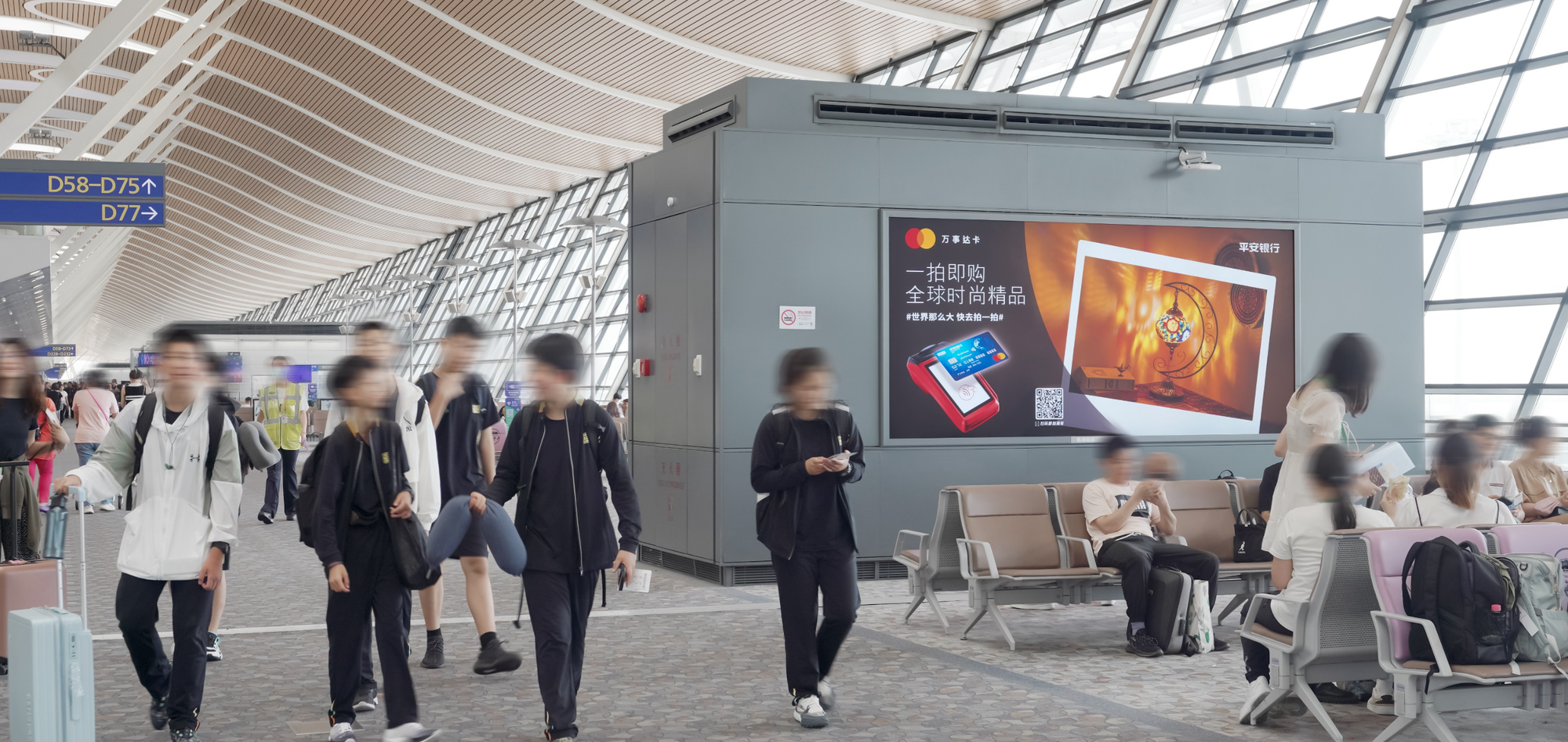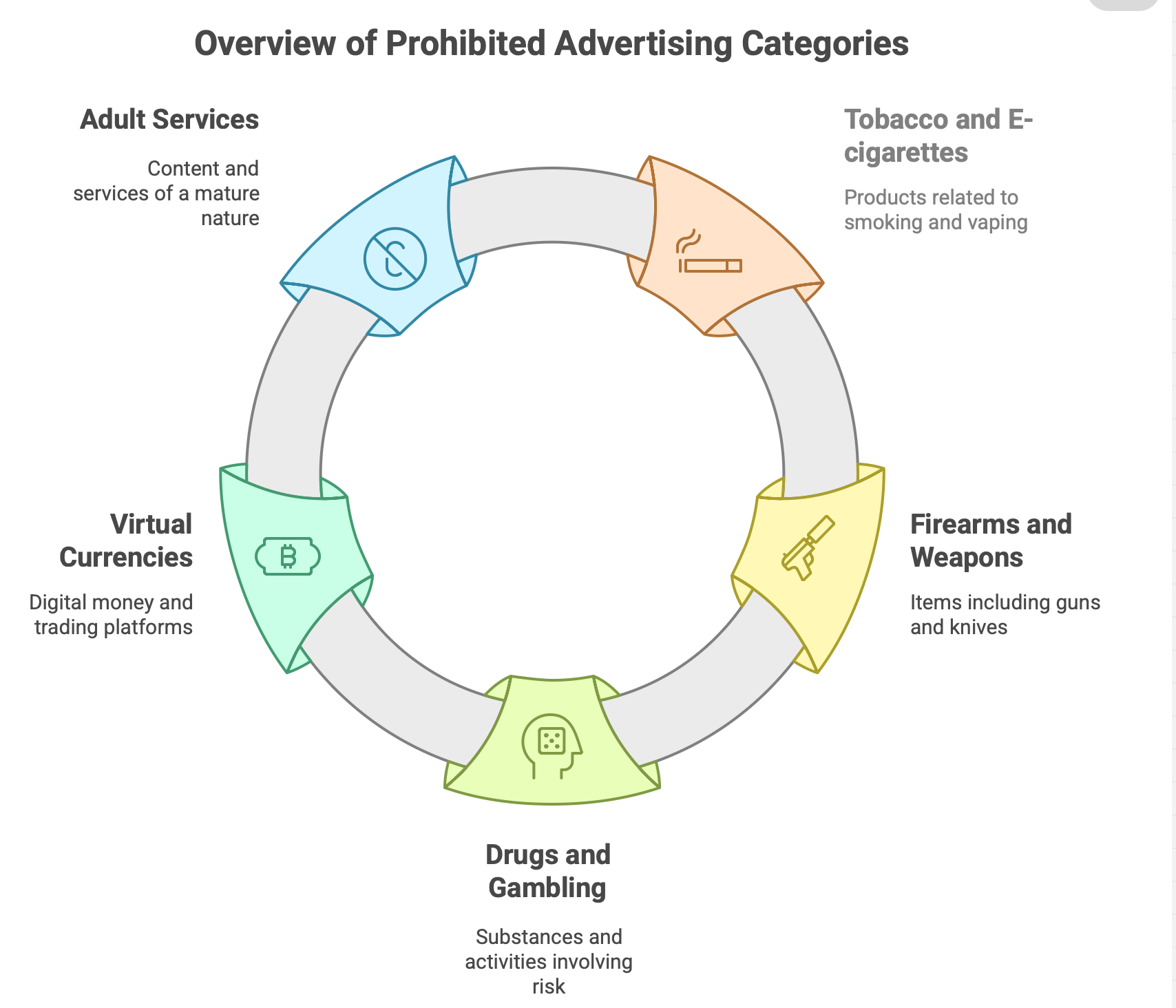Airport advertising in China provides global brands with a premium gateway to reach influential business travelers and affluent consumers. However, the artwork approval process involves detailed compliance checks rooted in Chinese cultural, linguistic, and legal standards.

Many international advertisers find these regulations complex. To simplify, our China-based team and resident experts have summarized the essential artwork approval guidelines applicable to all major airports across China.
1. General Restrictions
Advertisements depicting or implying vulgarity, gambling, violence, money worship, pornography, negativity, or criminal behavior will be rejected. Chinese airports maintain a family-friendly and internationally neutralenvironment; all creatives must align with this ethos.
2. Prohibited Advertising Categories
Advertising is strictly prohibited for the following products and services:
- Tobacco and e-cigarettes
- Firearms, ammunition, imitation weapons, and controlled knives
- Drugs and gambling
- Virtual currencies and trading platforms
- Pornographic or adult services

3. National Dignity and Political Sensitivity
Artworks must not undermine the dignity or interests of the People’s Republic of China.
Any image, text, or symbol considered politically sensitive or disrespectful toward the Chinese state or its leadership will be refused approval.
4. Language Requirements
All advertisements must use Simplified Chinese or be bilingual (Simplified Chinese and English).
Traditional Chinese text or non-standard abbreviations are not accepted.

5. Logo and Trademark Compliance (WIPO Certificate)
If an advertisement includes a logo or brand mark, a WIPO (World Intellectual Property Organization) international registration certificate under the Madrid Agreement or Protocol must be provided.
This proves the brand’s legal international registration and its protection in China, if designated.
If the certificate is unavailable, advertisers must display a Simplified Chinese translation of the brand name.
Purpose:
- Ensures trademark authenticity
- Enhances clarity for local audiences
- Aligns with China’s IP and consumer protection laws
Example:
- Brands like Apple, Mercedes-Benz, or HSBC can provide their WIPO certificate.
- New entrants without WIPO registration must display the Chinese translation of their brand name or logo.
6. Geographic and Political References
Ads must not:
- List Hong Kong, Macao, or Taiwan alongside China or other sovereign countries.
- Use terms like “China-Hong Kong” or “One China, One Taiwan.”
- Display flags or emblems of unrecognized territories.
7. Cultural and Religious Sensitivity
Artworks promoting feudal superstitions, fortune-telling, or religious activities for commercial gain are prohibited.
Product messaging must avoid spiritual or superstition-based claims.
8. Truthful and Lawful Representation
Avoid absolute or exaggerated phrases like “No.1,” “World’s Best,” or “Top Brand.”
All statements must be factually verifiable.
Complaints about misleading claims can result in immediate ad removal, with all related costs borne by the advertiser.
9. Regulated Product Categories
The following product categories require official content review by Chinese authorities before approval:
- Pharmaceuticals and healthcare products
- Medical devices and supplements
- Veterinary drugs and pesticides
- Functional and special medical-purpose foods
10. Celebrity Endorsements and Data Citations
Celebrities with criminal records or histories of anti-China remarks are banned from use in advertisements.
Any data or citations used must be accurate, sourced, and time-stamped.
11. Visual Design and Text Presentation
Airport advertisements should focus on strong visuals rather than excessive text.
Use complete, readable language, avoiding acronyms and unnecessary abbreviations.
12. Address and Location Consistency
Any mention of store or outlet addresses must exactly match listings on the official airport authority website.
This maintains uniformity and prevents misleading representations.
13. Submission and Approval Timeline
All advertising artworks must be submitted at least seven (7) working days prior to campaign start for Airport Authority approval.
Delays in submission may result in loss of display time, for which advertisers are fully responsible.
14. Continuous Updates
Airport advertising regulations are updated regularly by Chinese authorities.
Advertisers must verify the latest guidelines prior to artwork submission to ensure compliance.
15. Social Media, QR Codes, and External Links Restrictions
Use of social media icons or references such as Facebook, Instagram, YouTube, X (Twitter), or WhatsApp is strictly prohibited in Chinese airport advertisements.
This restriction includes:
- Displaying international social media icons or logos
- Including QR codes that lead to blocked or foreign websites
- Promoting content hosted on non-Chinese platforms
Even if a QR code leads to an official brand website, the linked webpage content must undergo content review (censorship) to ensure compliance with Chinese internet regulations.
Only QR codes linking to approved domestic platforms — such as WeChat, Weibo, or a China-hosted corporate website — may be used, and they too require pre-approval by the airport authority.
This rule aligns with China’s Cybersecurity and Advertising Law, ensuring all linked content adheres to the same regulatory standards as physical advertisements.
Navigating Airport Advertising in China Made Simple
For international advertisers, compliance with these guidelines can seem overwhelming.
With our resident representative office in China and a team of local media experts, we help brands streamline the entire process — from artwork preparation and translation to legal checks and final approval.
We ensure your campaigns are approved faster, executed flawlessly, and displayed confidently across China’s busiest airports.
When it comes to airport advertising in China, no one makes the process smoother.
Frequently Asked Questions (FAQs)
1. Why is artwork approval mandatory in Chinese airports?
All airport advertising must pass approval to ensure it aligns with Chinese legal, cultural, and political standards, maintaining the airport’s international reputation and compliance.
2. Can I include Facebook or YouTube icons in my ad?
No. Icons or mentions of international social media platforms like Facebook, YouTube, Instagram, or X (Twitter) are not allowed. Only approved Chinese platforms such as WeChat or Weibo may be referenced, and even then, pre-approval is required.
3. What if I use a QR code linking to my brand website?
If a QR code is included, the website content it leads to must also undergo content censorship and approval. The airport authority and relevant agencies will check that the landing page complies with Chinese content regulations.
4. Do I still need a WIPO certificate for a global brand?
Yes — if your artwork displays a logo or brand name. The WIPO certificate confirms trademark legitimacy and ensures China recognizes your brand’s intellectual property.
If unavailable, a Simplified Chinese translation must appear on the creative.
5. How long does the artwork approval process take?
Approval typically takes seven working days, but additional time may be required for ads involving medical or financial products, QR codes, or new foreign brands entering the market.










